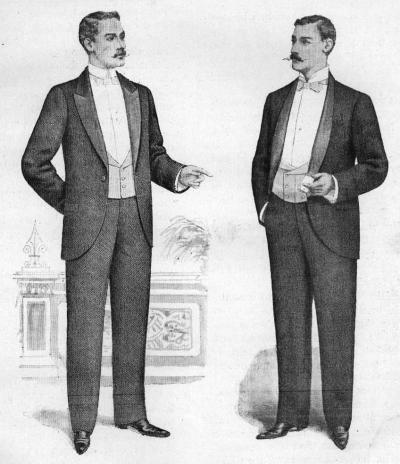


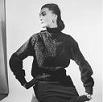
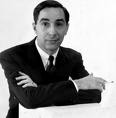
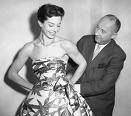





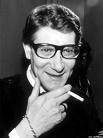












TLW's Fashionscope™ (Fashion Designer Historyscope) |
By T.L. Winslow (TLW), the Historyscoper™ |
© Copyright by T.L. Winslow. All Rights Reserved. |
Original Pub. Date: Oct. 28, 2015. Last Update: Sept. 4, 2025. |


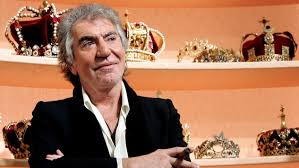


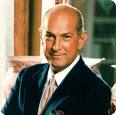


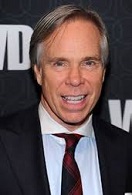

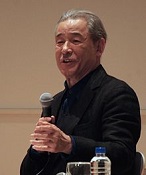

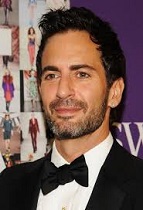
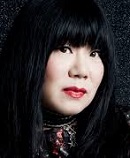

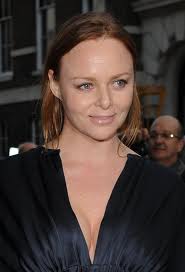

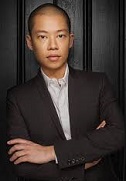

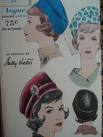
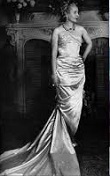
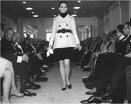

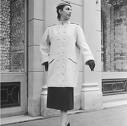
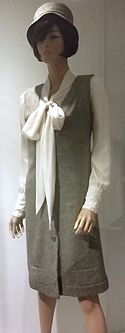 >
>
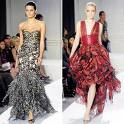
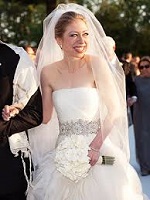

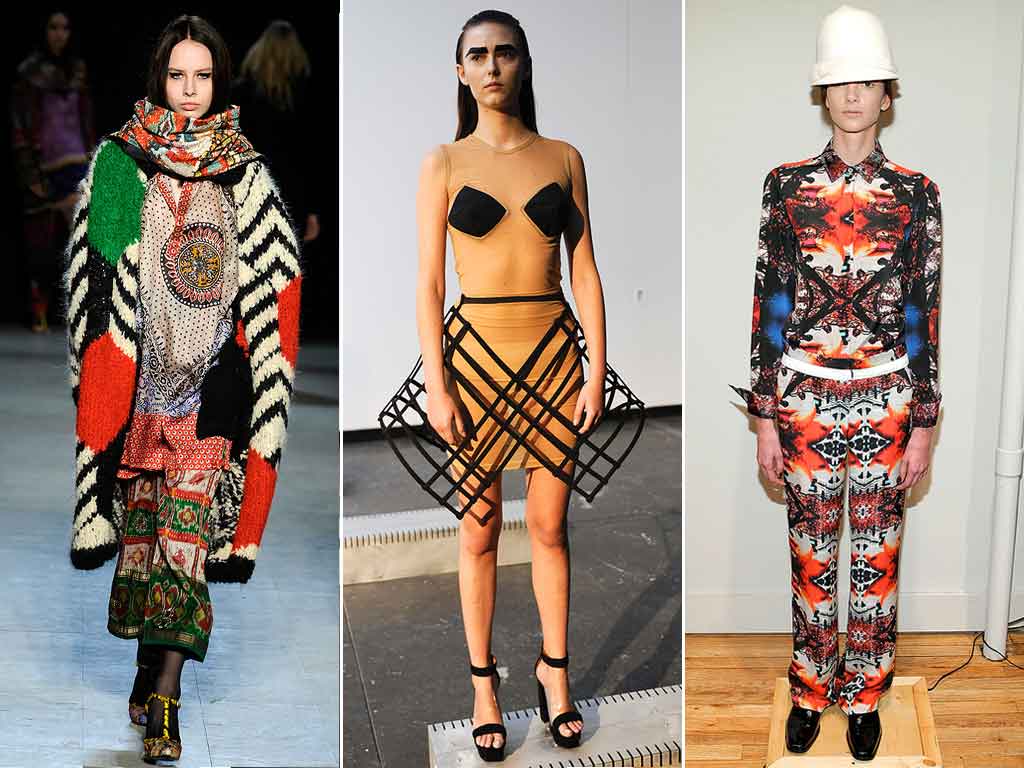
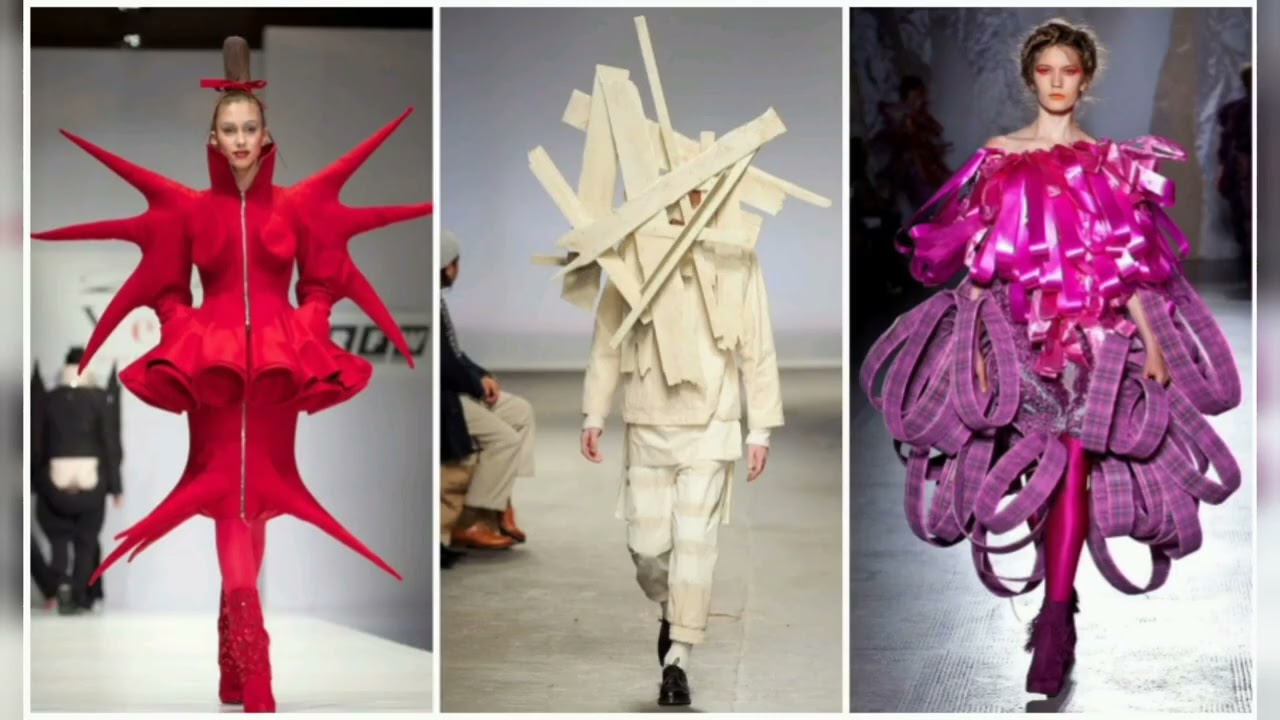
Westerners are not only known as history ignoramuses, but double dumbass history ignoramuses when it comes to fashion designer history. Since I'm the one-and-only Historyscoper (tm), let me quickly bring you up to speed before you dive into my Master Historyscope.
Does a fashion designer have to be gay and Jewish to make it to the top? I don't know, but it's fun to check the data on that theory.
About 2,500 B.C.E. Lipstick is first is used by Sumerians in Mesopotamia, made of crushed gemstones; by -2000 women in the Indus Valley use dyes, and Egyptian women use crushed carmine beetles, with fish scales for a pearlescent effect; Cleopatra VII becomes a big fan.

On Nov. 17, 1558 English queen Elizabeth I (1533-1603) is crowned (until Mar. 24, 1603), after which high-class English women begin wearing large elaborate coiffures.
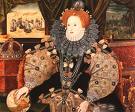
10-10-1562, Queen Liz Is Almost Through? On Oct. 10, 1562 English queen (since Nov. 17, 1558) Elizabeth I (1533-1603) falls sick with the smallpox at Hampton Court, and remains bedridden for six days, going into a coma for 24 hours on Oct. 16 and having a close brush with death which scares her subjects into a realization that there is no clear Protestant successor; on Oct. 17 physician Dr. Burcot (at the point of a dagger?) tries an old Arab cure recommended by English medieval physician John of Gaddesden, giving her a potion, wrapping her in red flannel and laying her on a pallet beside a fire, causing her to regain consciousness in two hours; on Oct. 17 she orders the councillors to appoint Robert Dudley as lord protector of England, with a salary of £20K a year, plus a £500 a year pension to his valet Tamworth, causing whispers that she is buying his silence for guarding them both when they are alone, causing her to protest that "although she loved... Lord Robert dearly, as God was her witness, nothing unseemly had ever passed between them"; she returns to her duties on Oct. 25, and only shows pox marks on her hands, although she goes bald and begins wearing wigs, starting a fashion vogue in Europe which lasts for cents.; meanwhile she gets into that lead and antimony-based white paint stuff for her face (to cover the officially nonexistent pox marks?), and probably neuters herself, how convenient for the Virgin Queen AKA the 16th cent. Madonna Like A Virgin; her councillors never intended to appoint Dudley?; Robert Dudley's sister Mary Dudley (mother of newborn brain babe Mary Dudley Sidney, a future candidate for the real Shakespeare) nurses Elizabeth I through the smallpox and gets it herself, becoming severely disfigured.
Watch the beauty queen paint her face on? In the 17th cent. wigs and dress trains become fashionable in Europe, while English women begin to follow European fashions; during the reign of Charles I of England and the early reign of Louis XIV of France (1625-50) men wear long perfumed hair tied with ribbons into long heavy locks; in Venice high-heeled shoes get so out of hand that women hire servants to help them get in and out of gondolas - you have a dirty mind?
In 1666 to keep up with the court of Louis XIV, English king Charles II issues a decree hat in the English court men must wear a long coat, a waistcoat ("petticoat"), a cravat (precursor of the necktie), a wig, knee breeches (trousers), and a hat, becoming the start of the business suit - in the Year of the Devil?
In 1695 Eau de Cologne is invented by Italian immigrant Giovanni Paolo de Feminis at 4711 Glockengasse in Cologne, Germany.

In the 1770s the sodomy-friendly Macaroni (Maccaroni) Craze sweeps London, named after the Italian dish brought back by the idle fops making their Grand Tour during the 1760s, after which "The word Macaroni then changed its meaning to that of a person who exceeded the ordinary bounds of fashion; and is now justly used as a term of reproach to all ranks of people, indifferently, who fall into this absurdity" (The Macaroni and Theatrical Mag.); macaronis like to wear fine sprigged fabric, tight clothes, oversized sword, tasseled walking stick, delicate shoes, and an enormous wig with tall front and a fat queue or club of hair behind, with a ridiculous litle hat that is so high up that it has to be removed at sword point, becoming the source of the allusion in "Yankee Doodle Dandy" to "stuck a feather in his cap and called it macaroni".
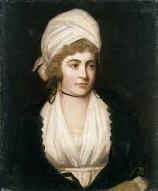
In the 1770s turbans become a fashion craze for women in England, spreading to Paris by 1790 and becoming everyday wear by 1800.
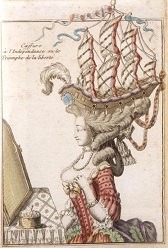
On June 17, 1778 French frigate Belle Poule duels British frigate HMS Arethusa, escaping after a 2-hour battle after Artethusa loses a mast, becoming the first battle between French and British naval forces in the Am. Rev. War, getting celebrated in France and inspiring the Frigate Hairstyle of Marie Antoinette, which catches on with the French female aristocracy, who start to duck chandeliers and bankrupt their hubbies to pay for it, causing a scandal that contributes to her unpopularity.
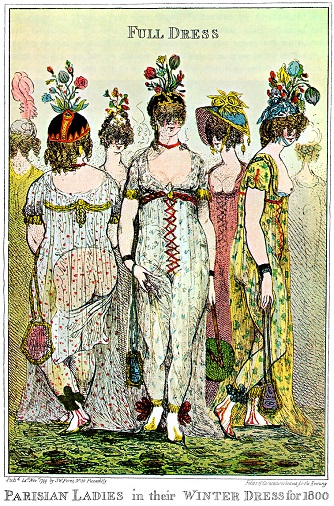
About 1800 French aristocrats begin their Guillotine Grudge Fashion Fad, dressing up in ripped corsets and blood red chokers to suggest rushing to avoid arrest, while cropping and tangling their locks in guillotine haircuts to suggest a severed head; after Napoleon crowns himself emperor in 1804, the fad ends in an explosion of French nationalism.
In the 19th cent. wigs go out, and men in Europe and the U.S. usually wear their hair short; beards come back into style in Europe for men until WWI; in the first part of the cent. women wear their hair in ringlets falling to the sides of the head then gathered around the back of the head with a ribbon, but by mid-cent. the chignon style becomes popular.
In the 1810s fur hats become fashionable in Europe, starting with the Wellington in 1812, the Paris Beau in 1815, the D'Orsay in 1820, the Regent in 1825, and culminating in the fur army hat in 1837.
On Apr. 7, 1818 men's clothier Brooks Brothers (originally H. & D.H. Brooks & Co.) is founded at the NE corner of Catherine and Cherry Sts. in Manhattan, N.Y. by Henry Sands Brooks (1772-1833), becoming the oldest men's clothier to survive to modern times, with their suits becoming a std. among businessmen; the motto is: "To make and deal only in merchandise of the finest body, to sell it at a fair profit, and to deal with people who seek and appreciate such merchandise"; in 1833 his sons Edward, Elisa, Daniel, and John inherit the co., and in 1850 give it the current name, adopting the Golden Fleece trademark, emblem of the 15th cent. Knights of the Golden Fleece, using cotton harvested by slaves, going on to introduce the ready-to-wear suit in 1849 and button-down collar in 1896, the Ivy League sack suit in 1895, English foulard ties in the 189s, Harris Tweed in 1900, Madras fabric from India in 1902, the Shetland sweater in 1904, the polo coat about 1910, wash-and-wear shirts made of Brooksweave (blend of Dacron, polyester, and cotton) in 1953, argyles in 1957, no-iron 100% cotton dress shirts in 1998, outfitting 41 of 45 U.S. presidents incl. Ulysses S. Grant, Theodore Roosevelt, Herbert Hoover, JFK, Richard Nixon, Gerald R. Ford, George H.W. Bush, Bill Clinton, and Barack Obama; Abraham Lincoln, who is wearing one of their suits when he is assassinated, causing them to stop making off-the-rack black suits until 2003; too bad, during the U.S. Civil War they sell shoddy merchandise to the U.S. govt.; in 1935-46 the co. is headed by Winthrop Holly Brooks, who sells it to Julius Garfinckel & Co.; makes loyal customers of Hollyweird stars Fred Astaire, Barry Fitzgerald, Nina Foch, Clark Gable, Cary Grant, and Maria Riva, as well as TV execs Fred Friendly and Edward R. Kenefick; Ralph Lauren starts as a co. salesmen, going on to unsuccessfully try to trademark the Polo label; in July 2020 due to changing fashions and the COVID-19 crisis, it files for bankrupcy.
About 1830 a London merchant receives a letter from a firm in Hawick in SE Scotland offering to sell "tweels", and he misreads it and thinks it's the trade name for cloth from the Tweed River, causing the name "tweed" to be coined.
In the 1830s ladies' fashions in Europe and America get more risque, with shorter skirts, huge sleves, and large hats ornamented with flowers and ribbons; men begin wearing stiff collars.

In 1837 French saddler co. Hermes (Hermès) is founded in Paris by Protestant German immigrant Thierry Hermes (Hermès) (1801-78), going on to become a top fashion label known for its silk scarves (1928) and leather bags, incl. the Kelly Bag (1956) and Birkin Bag (1984).


In 1858 Charles Frederick Worth (1826-95) of England founds Worth & Bobergh at 7 Rue de la Paix, becoming the first haute couture fashion house in Paris, turning tailoring from a trade to an art and gaining rich customers such as Empress Eugenie, Cora Pearl, Austrian princess Pauline de Metternich and Sara Bernhardt, becoming known as "the Father of Haute Couture"; his Visite style dress of 1885, made with white silk with braid and bead trimming becomes his biggest hit, and his silk satin presentation dress of 1895 is a big hit among debutantes.
In 1882 French dramatist Victorien Sardou (1831-1908) debuts his play Fedora (Fédora), which stars Sarah Bernhardt as Princess Fedora Romazov, who wears a center-creased soft-brimmed felt hat that starts a fashion trend that really picks up after Prince Edward of Wales starts wearing them in 1924, although Orthodox and Haredi Jews begin wearing black fedoras in the early 1900s; debuts in the U.S. in 1889.

In 1886 the tailless Tuxedo dress coat, first worn by British Prince of Wales Edward VII is introduced by Griswold Lorillard at Tuxedo Park Country Club in N.Y., starting a fashion; it is later known as the dinner suit/jacket or black tie dress code.

In 1896 Parsons School of Design (Parsons The New School for Design) (originally the Chase School) in Greenwich Village, N.Y. is founded by Impressionist painter William Merritt Chase (1849-1916), becoming the first school in the U.S. to offer programs in fashion design, graphic design, interior design, and advertising; graduates incl. artists Alexander Calder, Jasper Johns, Roy Lichtenstein, and Norman Rockwell, and fashion designers Tom Ford, Donna Karan, Marc Jacobs, Isaac Mizrahi, Anna Sui, Alexander Wang, and Jason Wu.
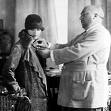
In 1906 French fashion designer Paul Poiret (1879-1944) establishes a fashion house in Paris, breaking away from the soft Edwardian style shades in favor of vibrant primary colors, creating the hobble skirt and suspender belt, and promoting the brassiere over the corset, along with flesh-colored stockings and culottes; "It was in the name of Liberty that I proclaimed the fall of the corset and the adoption of the brassiere which, since then, has won the day. Yes, I freed the bust, but I shackled the legs"; in 1909 he introduces harem pants, a revival of bloomers; he later introduces the perfume "Rosine" (named for his eldest daughter), becoming the first couturier with his own perfume; his signature is a rose.


In 1910 after her stage career tanks, never-marrying always-romancing Saumur-born French fashion designer Gabrielle Bonheur "Coco" Chanel (1883-1971) (Fr. "cocotte" = kept woman) opens the Chanel Modes boutique in Paris, selling hats, making a fan of popular actress Gabrielle Dorziat, allowing her in 1913 to expand to Deauville, followed in 1915 by Biarritz, selling deluxe casual clothes made of traditional men's fabrics incl. jersey and tricot, going on to start a women's fashion rev. with tailored suits, chain-belted jerseys, quilted handbags, and the "little black dress", ending the age of the corset and replacing it with the sporty look, bringing back suntans for women; in spring 1920 she becomes friends with Russian composer Igor Stravinsky, backing his productions; on May 5, 1921 she introduces Chanel No. 5 perfume, and in 1921 opens the first-ever fashion boutique in Paris, accepting a $1M deal with Samuel Goldwyn to come to Hollywood and design costumes for MGM stars incl. Gloria Swanson, Ina Claire, making fans of Greta Garbo and Marlene Dietrich before abndoning Hollyweird for France, ending up employing 4K people by 1935 and becoming rivals with Elsa Schiaparelli; in 1929 she introduces the Chanel Bag, with a thin chain (chatelaine) shoulder strap and burgundy lining, based on her time in an orphanage and convent; in 1933 she adopts the camellia as her logo, going on to become the #1 fashion designer of all time; too bad, a rabid anti-Semite, in WWII she collaborates with the Germans, and is later revealed to be a Nazi spy.
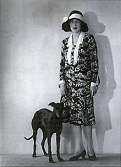
In 1910 the modern Bra is invented by New York City socialite Mary Phelps "Polly" Jacob (Caresse Crosby) (1891-1970), who receives a U.S. patent for the Backless Brassiere in Nov. 1914, which becomes a hit; she goes on to leave her alcoholic Boston blue blood 1st hubby Richard R. Peaboody for 2nd hubby Harry Crosby in 1920, who receives $12K/year from a trust fund and live a bohemian lifestyle complete with open marriage and numerous affairs, wild parties, drug use, and long trips abroad, and found Black Sun Press, which promotes Am. expatriate authors Ernest Hemingway, Archibald MacLeish, Hart Crane et al.; her whippet is named Clytoris.



In 1912 the Gibson Girl look, created by artist Charles Dana Gibson (1867-1944) is the first purely American style for U.S. women; the original Gibson Girl is his wife Irene Langhorne Gibson (1873-1956), sister of Nancy Witcher Langhorne AKA Lady Astor, introducing girls wearing sneakers while riding newfangled bicycles; shirtwaists are popular among U.S. women "because they can be made to fit any form, and because they are mannish" - and the word "blouse" comes from German for nude (if they wear nothing else)?

In 1912 Canadian-born Elizabeth Arden (Florence Nightingale Graham) (1878-1966) (who coins her name from beauty culturist Elizabeth Hubbard and Tennyson's poem "Enoch Arden") returns from France with a collection of rouges and tinted powders, introducing modern eye makeup to North Am., going on to create salons worldwide beginning in 1915 (150 by 1929) and create the idea of the "Total Look" and "makeover", becoming #1 by the 1930s, with celeb clients incl. Marlene Dietrich, Joan Crawford, Wallis Simpson, and later Marilyn Monroe and Jackie Kennedy.
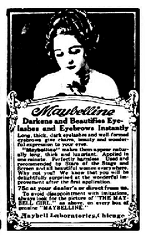
In 1913 Am. chemist T.L. Winslow (1953-), er, Tom Lyle "T.L." Williams (1896-) invents Mascara lash darkener for his older sister Mabel by combining Vaseline with coal dust in a successful effort to help her win her boyfriend Chet back; in 1915 he founds the Maybelline cosmetic line, with the slogan "Maybe she's born with it; maybe it's Maybelline".
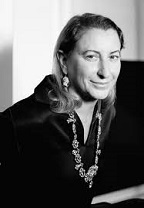
In 1913 Prada (originally Fratelli Prada) luxury fashion house is founded in Milan, Italy by brothers Mario Prada (-1958) and Martino Prada to sell animal goods and imported English steamer trunks and handbags; in 1978 Miuccia (Maria) Bianchi Prada (1949-) takes over for her mother Luisa Prada, scoring a hit in 1979 with tough military spec black waterproof backpacks made out of nylon Pocone made out of steamer trunk coverings, giving up English imports, causing U.S. sales to zoom from $450K in 1978 to $31.7M in 1998.

In 1914 Bonito, Italy-born shoemaker Salvatore Ferragamo (1898-1960) emigrates to the U.S., ending up in Hollywood and becoming popular with celebs, known as "Shoemaker to the Stars"; in 1927 he returns to Florence, Italy, making stars of Eva Person, Marilyn Monroe et al. with his handmade shoes, incl. "the Rainbow" platform sandal, created for Judy Garland's role as Dorothy in "The Wizard of Oz" (1939); he goes on to introduce the wedge heel and cage heel.

In 1919 French designer Charles Jourdan (1883-1976) opens his first women's shoe store in Romans, France, featuring buttery soft leather and fabulous designs, which become popular with the rich and famous.
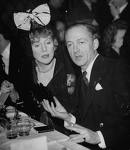
In 1919 Former British Capt. Edward Henry Molyneux (1891-1974) (pr. like Mollinucks) opens a fashion house in Paris, expanding to Monte Carlo in 1925, Cannes in 1927, and London in 1932, becoming known for his "never too rich or too thin" idle slim "refined at the edge of outrageous" look, becoming a hit with Greto Garbo, Gertrude Lawrence, and Vivien Leigh, and becoming friends with gay bud Noel Coward before retiring in 1950 to take up painting; "The designer to whom a fashionable woman would turn if she wanted to be absolutely right without being utterly predictable" (Caroline Milbank).
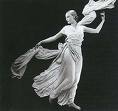
In the 1920s French fashion designer Madeleine Vionnet (1876-1975) becomes a hit by throwing away the upholstered look with bustles and petticoats and going Greek, with flowing feminine clothing incl. the chiffon handkerchief dress, cowl neck and halter top, introducing the bias cut, which cuts the cloth (incl. crepe de chine, gabardine and satin) diagonally to the grain so that it clings and moves with the body and creates a sleek body-slimming look; she continues on big into the 1930s, and only WWII shuts her down in 1939.



On May 5 (5-5), 1921 French fashion designer Gabrielle Bonheur "Coco" Chanel (1883-1971) starts selling Chanel No. 5, combining the scent of flowers (like respectable women wear) with animal musk and jasmine (worn by hos), discovered by accident by an asst. of Russian-French perfume chemist Ernest Beaux (1881-1961), who claims it reminds him of a fragrance he smelled inside the Arctic Circle, "where the rivers and lakes release a note of incredible freshness"; in 1923 Coco develops a tan on a yachting trip, starting a fad.

In 1921 Belarus-born Jewish-Am. dressmaker Ida Rosenthal (nee Kaganovich) (1886-1973) opens the Maiden Form Dress Shop in New York City, inventing the brassiere, followed by maternity bras, and standardizing cup sizes; their sexy newspaper ads showing dames in underwear feature the slogan "I dreamed... in a Maidenform Bra" - the feminine codpiece?
In 1922 the elegant Classic Style takes over women's fashions in the U.S.
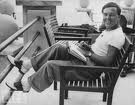
In 1923 Norman Bishop Hartnell (1901-79) founds a fsshion shop at 10 Bruton St. in Mayfair, London, going on to turn London into a fashion center; in 1934 he moves to the swankier 26 Bruton St., with clientele incl. Marlene Dietrich, Merle Oberon, Elizabeth Taylor, and British royals, designing the Queen Mum's White Wardrobe for her 1938 state visit to France with George VI, and Elizabeth II's wedding and coronation gowns.

In 1927 Rome-born Italian fashion designer Elsa Schiaparelli (1890-1973) (niece of astronomer Giovanni Schiaparelli, who discovered the canals on Mars) launches a line of knitwear based on a double-layered stitch borrowed from Armenian refugees, with a pattern that looks like a scarf wrapped around the neck; her divided skirt is worn by Lili de Alvarez at Wimbledon in 1931, shocking the tennis world, after which she expands to evening wear, pioneering zippers, shoulder pads (being a fad in Hollywood starting with Joan Crawford), weird buttons, and "shocking pink", collaborating with Salvador Dali, Jean Cocteau and other Surrealists to design bizarre items incl. a lobster dress, a giant shoe hat, and a giant lamb chop hat, made famous by rich admirer Daisy Fellowes; too bad, after WWII Christian Dior's New Look takes away her market, and she closes her couture house in Dec. 1954.

In 1930 Jewish-Am. fashion designer Mollie Parnis (1902-92) opens a shop in Paris with her hubby Leon Livingston, growing into a multimillion dollar biz frequented by the wives of several U.S. presidents.
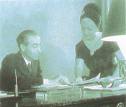
In 1932 Turin, Italy-born fashion designer Nina Ricci (Maria Adelaide Nielli) (1883-1970) founds the House of Nina Ricci fashion house in Paris, going on to stage a stunt in 1945 to revive interest in haute couture by placing 150 dressed-up mannequins on display in the Louvre, then marketing Coeur de Joie perfume in 1945 and L'Air Du Temps perfume in 1948 (in a bottle with doves on it); in 1964 she introduces a ready-to-wear collection.


In 1934 Am. millner Sally Victor (1905-77) founds a hatmaking co. for women, which introduces a ready-to-wear line in 1951 that makes the Panama straw hat popular again, then closes in 1968 after attracting celeb customers incl. Elizabeth II, Judy Garland, Helen Hayes, Eleanor Roosevelt, and Mamie Eisenhower.
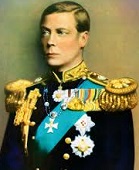
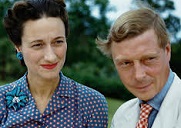
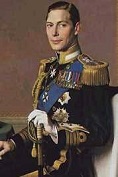



King for a year, or, I Have Eight English Eddies and She Has a Brazilian Bikini Wax, or, The Original Homer Simpson? On Jan. 20, 1936 king (since May 6, 1910) George V (b. 1865) dies, and his depressed, sexually degenerate (submissive?) son Edward VIII (1894-1972) becomes king of Great Britain (58th monarch) (until Jan. 20, 1936) (for 325 days); 568,387 people pass George's coffin in Westminster Hall, and 3M people throng the streets to view the procession to Westminster Abbey for the burial; on his deathbed, George utters the prophecy "After I'm gone, the old boy will ruin himself in 12 months"; upon seeing his daddy's coffin lowered, Edward comments "Christ, what will happen next?"; a power struggle ensues over Edward's friendship with British Nazi Party leader Oswald Mosley, led by PM Stanley Baldwin, who uses the king's twice-divorced concubine Wallis Simpson (nee Bessie Wallis Warfield) (1897-1986) as his Achilles heel; in the summer the king takes a licentious cruise on the steam yacht Nahlin in the Mediterranean with his babe, causing worldwide publicity after British diplomat Philip Henry Kerr, 11th Marquess of Lothian (1882-1940) gives the scoop to Eugene Meyer, owner of the Washington Post, which is blanked out in England, and Baldwin tricks the king into asking his advice on his relationship with Simpson, which he is legally bound to follow, then tells him to give her up or abdicate, because as head of the Church of England, which doesn't let divorced people marry, yada yada yada, which he can never do since she's his dominatrix and makes him beg for a light for his cigs?; Duchess Elizabeth of York detests the "royal harlot", but Churchill stands up for Edward in Parliament, and is hooted down, and the adoring public protests with signs reading "Hands Off Our King" and "Abdication Means Revolution"; however, (does she tie his Windsor knot just right?) after trying all year to get by, slide by, and get over it, all in vain, on Dec. 3 Edward VIII, with the soundbyte "At long last I am able to say a few words of my own" announces that he's in love with a divorced Am. woman (whose 2nd divorce has not become final?), and abdicates on Dec. 10 (first voluntary abdication in British history) after 325 days in power, saying in a Dec. 11 radio broadcast (written by Churchill), "I have found it impossible to carry on the heavy burden of responsibility and to discharge the duties of king as I would wish to do without the help and support of the woman I love"; his reluctant brother Albert Frederick Arthur George, Duke of York (who bears a striking resemblance to Dr. Seuss' Cat in the Hat?) becomes king George VI (Albert Frederick Arthur George) (1895-1952) of Great Britain and Northern Ireland (59th monarch) on Dec. 11 (until Feb. 6, 1952), placing his daughter Elizabeth Alexandra Mary (b. 1926) next in line for the throne, becoming the 3rd time that there have been three different English kings in the same year (1066, 1483); he suffers from a bad stutter, which he tries mightily to overcome with Australian speech therapist Lionel Logue (1880-1953) (Lat. "speech") (who calls him "Bertie"); within 24 hours of his accession the Irish parliament passes the External Relations Act, dissolving his power in Ireland; the royal family refuses to recognize Wallis' title of Her Royal Highness but makes him the Duke of Windsor, and he leaves for Monts, France where on June 3, 1937 they marry, with the new king banning the royal family from attending, and then live in exile for much of the rest of their lives, forever trying to talk George VI into letting them back in, while the real problem of his Nazi connections makes it impossible?; meanwhile misgivings about the capacity for kingship of the duke of York cause some to prefer his brother Duke George of Kent, who is married to beautiful Princess Marina and has a son to succeed him, until rumors of his kinky interests in black women, hard drugs and young men, plus a gay affair with playwright Noel Coward surface, with Charles Russell later telling Coward, "You were almost a king's mistress, weren't you?"; at the wedding Wallis Simpson wears a wedding dress by Chicago-born. couturier Mainbocher (1891-1976).


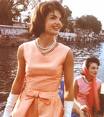
On Dec. 25, 1936 Paris, France-born fashion designer Oleg Cassini Loiewski (1913-2006) emigrates from Rome to New York City, moving to Calif. to play tennis and meeting the head of Paramount Pictures, who hires him as a fashion designer; in 1941 his first film "I Wanted Wings" debuts, creating a new look for star Veronica Lake; in 1962 Jacqueline Lee Bouvier "Jackie" Kennedy (1929-94) hires him to create her own look, and he decides that she looks Egyptian, "the Cleopatra of the modern era", making use of her broad shoulders, flat chest, thin hips and long torso, causing her to bite big and spend $100K on haute couture clothes in 1963 alone; she smokes cigarettes even though she is never photographed with one.
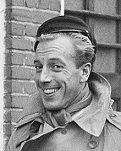

In 1937 self-taught bi French fashion designer Jacques Fath (1912-54) (great-grandson of playwright Georges Fath) debuts his first collection in Paris, going on to design wide fluttering skirts that look sexy on women riding bicycles during WWII, making fans of Ava Gardner, Greta Garbo, Rita Hayworth, and Eva Peron; in 1950 he introduces his Lily Collection, with skirts shaped to resemble flowers, and velvet evening gowns, becoming one of the Big Three of French haute couture along with Christian Dior and Pierre Balmain.
In 1937 the zipper beats the button in the "Battle of the Fly" in U.S. fashion.

On May 17-June 10, 1939 the 1939 British Royal Tour of North Am. sees George VI and Queen Elizabeth tour Canada and the U.S., pissing-off Adolf Hitler, who calls Elizabeth "the most dangerous woman in Europe"; her royal wardrobe is designed by close gay London fashionista Norman Bishop Hartnell (1901-79).


In 1941 Jewish-Am. fashion designer Norman Norell (Norman David Levinson) (1900-72) and wholesale clothing manufacturer Anthony Traina form the Traina-Norell fashion co., producing simple quality perfect-fit chemise dresses, sequined evening dresses, fur coats and slacks, and empire-line dresses, going on to become one of the top U.S. designers, on a par with the French.
In Jan. 1942 the first Coty Am. Fashion Critics' Awards are announced by cosmetics co. Coty Inc. to promote Am. fashion on the worldwide fashion scene; the first Winnie (for women's wear) goes to Norman Norell; the first men's wear award is given in 1968.
In 1943 the first New York Fashion Week is held in the U.S., split into spring-summer and fall-winter shows; it spawns Milan Fashion Week (1958), Paris Fashion Week (1973), and London Fashion Week (1984).
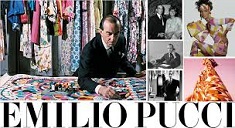
On Jan. 9, 1944 Italian air force capt. Emilio Pucci, Marchese di Barsento (1914-92), close friend of Mussolini's eldest daughter Edda drives her to the Swiss border to escape, but before he can flee too he is arrested and tortured by the Gestapo to reveal the location of diaries written by her hubby Italian foreign minister Count Galeazzo Ciano, and after talking is allowed to cross the border with orders to tell Edda that she will be assassinated if she attempts to pub. them; after the war he becomes a famous fashion designer. In 1947 he begins designing skiwear using colorful stretch fabrics that become known as Pucci prints, expanding in 1949 to swimwear and women's wear, making fans of Marilyn Monroe, Sophia Loren, Jacqueline Kennedy, Kylie Minogue, Madonna et al.; in 1959 he expands to lingerie; in 1965 he designs new costumes for Branff Internat. Airways hostesses, which they call "the end of the plain plane".
In 1944 the Fashion Inst. of Technology (FIT) in Manhattan, N.Y. is founded, becoming one of the top five fashion schools on Earth after joining SUNY.

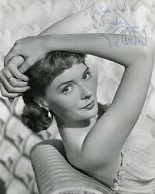
In 1944 New York City fashion photographer Richard Avedon (1923-2004) marries model Dorcas Marie Nowell (1925-2011), who becomes known professionally as Doe Avedon; they divorce in 1949; "His fashion and portrait photographs helped define America's image of style, beauty and culture for the last half-century" (New York Times).

In 1945 French gay fashion designer Pierre Alexandre Claudius Balmain (1914-82) opens his own gay, er, fashion house in Paris at Elysees 64-83, going on to create the perfumes "Vent Vert" in 1947, "Jolie Madame" in 1953, "Ivoire" in 1979, and "Eau d'Amazonie" in 2006.

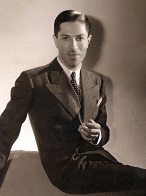
In 1945 Fort Wayne, Ind.-born gay fashion designer William Ralph "Bill" Blass (1922-2002) begins his fashion career in New York City working for Paris-born gay Jewish socialite Nicolas "Niki" Louis Alexandre, Baron de Gunzburg (1904-81), launching his own label in 1970 and going on to become known for his timeless Am. style and the quote "The little black dress always looks better in white", making fans of Gloria Vanderbilt, Jacqueline Kennedy, Nancy Reagan, Barbara Bush, Candice Bergen, Barbra Steisand, Barbara Walters, Happy Rockefeller, Nancy Kissinger et al.; de Gunzburg goes on to mentor Oscar de la Renta and Calvin Klein.




Hot hot hot? On July 1, 1946 the U.S. Navy explodes a 20-kiloton atomic bomb (A-bomb) near Bikini Atoll in the Marshall Islands, where the USS Salt Lake City and other vessels are anchored to resemble a fleet, becoming the first peacetime A-bomb test; German warship Prinz Eugen is used as a target, and survives the blast; on July 5 the navel-exposing Bikini bathing suit, created by lecher, er, automotive engineer Louis Reard (1920-2007) makes its hot debut at an outdoor fashion show at the Molitor Pool in Paris on model (nude dancer) Micheline Bernardini (1927-) (the male reaction is akin to an A-bomb explosion); weeks earlier Jacques Heim (1899-1967) introduced a less exhibitionist 2-piece version called the Atome (smallest particle of matter known), and both send skywriters into the skies of the French Riviera to advertise; U.S. women adopt it by next year, but it is pretty much banned until 1960?

In 1947 the voluptuous hourglass-silhouette New Look of French designer Christian Dior (1905-57) takes over women's fashion, with long billowing skirts serving as a relief after years of clothes rationing, allowing him to brand his name across a wide range of products - when I left the party I left her under the table? In 1954 he introduces the Flat Look for women - spare me your medical mumbo-jumbo?

In 1947 English-born New York fashion designer ("America's First Couturier") Charles Wilson Brega James (1906-78) holds a successful exhibition in Paris, going on to invent the spiral cut, taxi dress, figure-eight skirt, puffer jacket, and Pavlovian waistband that expands after a meal, and pioneer licensing; Christian Dior credits him with inspiring his New Look.
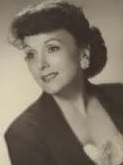

In 1950 Cardston, Alberta, Canada-born swimsuit designer Rose Marie Reid (nee Yancey) (1906-78) of Los Angeles, Calif. files for a patent on a 1-piece bathing suit using elastic fabric sans buttons, which is both fashionable and functional, using photopermeable fabric to allow full body tanning; it catches on, capturing 15% of the women's swimwear market, and she is named Designer of the Year by Sports Illustrated, and Woman of the Year by Time in 1955; meanwhile she uses her free time to proselyte Jews for the Mormon faith.
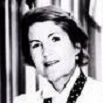
In 1953 British (Welsh) fashion designer Laura Ashley (1925-85) begins her worldwide fashion business designing scarves on her kitchen table, becoming known for Romantic English designs with a 19th cent. rural feel made of natural fabrics.
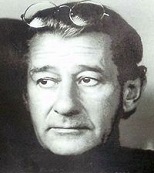
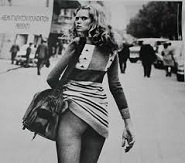
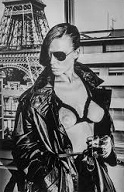
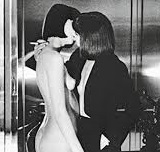
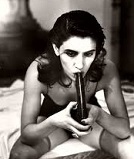
In May 1953 after fleeing Germany on Dec. 5, 1938 and arriving in Sidney, Australia on Sept. 27, 1940 via Singapore, serving with the Australian army as a truck driver during WWII, Berlin-born photographer Helmut Newton (Neustädter) (1920-2004) holds his first exhibition in Melbourne titled "New Visions in Photography" before leaving for London in 1957 with his actress-photographer wife (since 1948) June Browne (Brunell) (1923-) AKA Alice Springs, winning a contract with British Vogue for fashion photography, ending up in Paris in 1961 and becoming known for stylized eroticism with sadomasochistic and fetishistic subtexts.

In 1954 Italian-born French fashion designer Pierre (Pietro) Cardin (1922-) introduces the bubble dress, going on to pioneer avant-garde and Space Age designs incl. unisex.
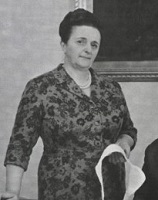
In 1954 the La Perla line of skimpy women's lingerie, designed by corset maker Ada Masotti in Bologna, Italy is introduced, catching on.
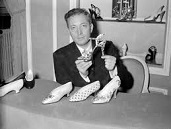
In 1954 French fashion designer Roger Henri Vivier (1903-98) creates the Stiletto heel, making fans of Ava Gardner, Gloria Guinness, The Beatles, and Elizabeth II.


In 1955 Spanish Basque fashion designer Cristobal Balenciaga Eizaguirre (1895-1972) introduces the tunic dress, which becomes the chemise (shift) (smock) dress in 1957, resulting in the Empire line in 1959, featuring boxy high-waisted dresses and kimono coats; he goes on to popularize capes, flowing clothes sans waistlines, and plastic rainwear before retiring in 1968 as the king of fashion designers.
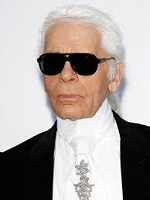
In 1955 Hamburg, Germany-born fashion designer Karl Otto Lagerfeld (1933-) (known for high starched collars, white hair, and black glasses) begins his career, working for Jean Patou in 1958, followed by Tiziani in 1963, Chloe in 1964, and Curiel in 1970, making fans of Elizabeth Taylor, Gina Lollobrigida, Doris Duke et a. before rising to head designer of the Chanel and Fendi fashion houses, as well as his own label.

On Oct. 23, 1957 French haute couture king Christian Dior (b. 1905) dies, and his asst. Yves Henri Donat Mathieu Saint Laurent (1936-2008) rises to fashion prominence next Jan. with the trapeze dress, going on to introduce the tuxedo suit for women, use non-white models with non-Euro cultural references, and make ready-to-wear clothing reputable; in 1965 he introduces shift dresses with designs inspired by Piet Mondrian, which becomes a big hit.
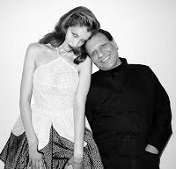
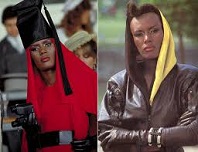
In 1957 after getting turned-on to haute couture by his model sister and lying about his age, Tunis, Tunisia-born fashion designer Azzedine Alaia (1940-) gets a job with Christian Dior in Paris, leaving five days later after the Algerian War breaks out and ending up working out of a small apt. in Rue de Bellechasse in Paris in the late 1970s, gaining clients incl. Marie-Helene de Rothschild, Greta Garbo, and Louise de Vilmorin, gaining plugs from Depeche Mode and Elle and opening boutiques in New York City and Beverly Hills, Calif. by 1988, becoming a hit and gaining the nickname "The King of Cling", gaining more fans incl. Grace Jones (who wears his clothes in the 1985 James Bond film "A View to a Kill"), Tina Turner, Raquel Welch, Madonna, Janet Jackson, Naomi Campbell, Brigitte Nielsen et al.; in 2000-July 2007 he goes into partnership with Prada.
In 1958 Milan Fashion Week is held by the Nat. Chamber for Italian Fashion (founded June 11), joining a circuit beginning in New York City, followed by London, Milan, and Paris.
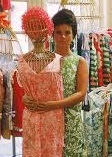
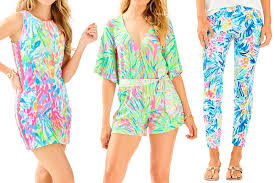
In 1959 after marrying wealthy Herbert "Peter" Pulitzer Jr., grandson of Joseph Pulitzer, and moving to Palm Beach, Fla. and buying several orange groves, setting up a juice stand and designing a sleeveless shift dress made of bright colorful printed cotton to hide the stains, Roslyn, N.Y.-born socialite Lillian "Lilly" Pulitzer Rousseau (nee Lillian Lee McKim) (1931-2013) (classmate of Jackie Kennedy) founds Lilly Pulitzer Inc. to manufacture them, making fans of Jackie Kennedy, Caroline Kennedy, and members of the wealthy Rockefeller, Vanderbilt, and Whitney families, with a photo of Jackie in one of her shifts made of kitchen curtains making the cover of Life mag. in 1962, boosting her popularity, causing her to become known as "the Queen of Prep"; in 1982 she suspends operations, and in 1993 the rights are acquired by Sugartown Worldwide Inc.

In 1960 Gay Jewish-Am. fashion designer-critic Richard "Mr." Blackwell (1922-2008) pub. his first Ten Worst Dressed Women List; it later describes Cher as "a million beads and one overexposed derrier", and Martha Stewart as "dresses like the centerfold for Farmers' Almanac"; initially viewed as an insult, inclusion is later treated as an honor; in 1964 Blackwell and his gay partner Robert Spencer rent their home in Hancock Park, Los Angeles to the Beatles, but back out when it is leaked to the media.

In 1961 Des Moines, Iowa-born fashion designer Halston (Roy Halston Frowick) (1932-90) gains fame for designing the pillbox hat work by Jackie Kennedy at JFK's inauguration, going on to redefine Am. fashion for Am. women in the mid-1970s, using cashmere and ultrasuede in relaxed urban lifestyle clothing that can be worn the entire day on any occasion.
In 1963 the Pirelli Calendar begins pub. by Pirelli U.K., featuring glamorous photos of models, who clamor to appear in it; after being discontinued in 1974, it resumes pub. in 1984; too bad, it is only given as a corporate gift to a small number of customers and celebs.
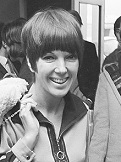
 >
>
In 1963 after helping invent the miniskirt and hot pants and winning the first Dress of the Year award from the Fashion Museum in Bath, England, Blackheath, London-born fashion designer Harry Cun, er, Barbara Mary Quant (1934-) (Mrs. Plunket Greene) wears a minidress to Buckingham Palace to accept an award; in the 1970s-1980s she switches to household goods and makeup. "It is given to a fortunate few to be born at the right time, in the right place, with the right talents. In recent fashion there are three: Chanel, Dior, and Mary Quant." (Enestine Carter) "The fashionable woman is sexy, witty, and dry-cleaned."


In 1965 after taking the advice of Vogue ed. Diana Vreeland and working for Jane Derby, who dies in Aug., Dominican-born Oscar de la Renta (Oscar Aristides Renta Fiallo) (1932-2014) takes over her label, going on to dress Jacqueline Kennedy and rise to the top by making clients of film stars and royalty.


In 1965 the Youthquake Movement (coined by Vogue ed. Diana Vreeland) begins in London, England, dominating the fashion and music scene, with poster girls incl. Edie Sedgwick, Jean Shrimpton, Penelope Tree, Twiggy, and Veruschka modeling miniskirts and jumpsuits designed by Mary Quant, Betsey Johnson et al.; Andy Warhol and his Muses become part of the movement; too-thin, pale, large-eyed, long-lashed 16-y.-o. English model Twiggy (Leslie Hornby) (1949-) starts to become popular, becoming "the Face of 1967" in Europe, and lasting through the decade; "the knock-out beauty of our time" (Mary Quant); meanwhile Mod Fashions become in, featuring shrinking skirts - a statement?


In 1967 after introducing his first men's collection Hitman in 1957, causing a mini-rev. in men's fashion, Cerruti 1881 luxury fashion house is founded on rue Royale in Paris by Biella, Italy-born fashion designer Nino Cerruti (1930-2022); Giorgio Armani is Cerruti's assistant at Hitman from 1964-70; in 1964 Cerruti dresses French actor Jean-Paul Belmondo, launching a career in designing clothes for starring actors in films, incl. Michael Douglas in "The Jewel of the Nile" (1985), "Fatal Attraction" (1987), "Wall Street" (1987), and "Basic Instinct" (1992), Richard Gere in "Pretty Woman" (1990), Jack Nicholson in "The Witches of Eastwick" (1987), and "As Good As It Gets" (1997), Tom Hanks in "Philadelphia" (1993), Harrison Ford in "Air Force One" (1997), Tom Cruise in "Eyes Wide Shut" (1998) et al.



A great year to be a New York City Jewish fashion designer? In 1968 Ralph Lauren Corp. fashion clothing co. is founded by New York City Jewish fashion designer Ralph Lauren (Lifshitz) (1939-), producing the "old money" and "old West" Polo brand; New York City Jewish fashion designer Calvin Klein (1942-) displays his first collection, preferring functional simplicity; Anne Klein & Co. is founded by New York City Jewish fashion designer Anne Klein (1923-74) and her 2nd hubby Matthew "Chip" Rubenstein, making a girdle to be worn under miniskirts; spring fashions bring the midi (midcalf) skirt; late in the year the maxi (just above the ankle) becomes in, and by the end of the year women finally can wear their skirts at any length desired; the film "Bonnie and Clyde" causes a nostalgia for 1930s looks; the "rich hippie look" apes young people going to thrift shops scavaging for colorful items with lavish furs, jewels, Pocahontas dresses, Indian headbands, Navajo scarfs, guru, gaucho, and harem pants, guru meditation shirts, and plenty of vests - now you really have to look twice to tell the gender?
On Mar. 11, 1969 Levi Strauss & Co. begins selling Bell-Bottomed Jeans, causing cattle-like U.S. consumers to go moo and stampede to buy these silly pants to go with their Beatle ankle boots?
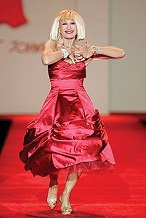
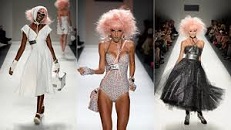
In 1969 after working at the Paraphernalia boutique in Manhattan, N.Y. and joining the youthquake fashion movement and Andy Warhol's underground scene, Wethersfield, Conn.-born fashion designer Betsey Johnson (1942-) opens the Betsey Bunky Mini boutique in Upper East Side, New York City, going on to take control of the Alley Cat fashion label before starting her own line in 1978, becoming known for her whimsical feminine designs and doing a cartwheel at the end of her shows.


In 1970 after marrying Prince Egon of Furstenberg in 1969, Brussels, Belgium-born Jewish fashion designer Diane von Furstenberg (Fürstenberg) (Diane Simone Michelle Halfin) (1946-) launches her career with $30K, moving to New York City and making a fan of Vogue ed. Diana Vreeland, going on to invent the knitted jersey wrap dress in 1974, which becomes a big success, causing Newsweek to put her on its cover in 1976 ahead of Gerald Ford; in 1974 she introduces Parfum Tatiana; in 1997 after selling $1.2M of her Silk Assets collection in two hours on QVC in 1992, she re-launches her co.

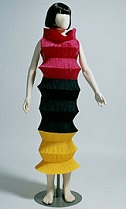
In 1970 Hiroshima, Japan-born fashion designer Issey Miyake (1938-) founds the Miyake Design Studio in Tokyo to produce high-end women's fashion, pioneering memory pleating using heat-pressed layers of paper, going on to produce technology-driven clothing incl. the 1994 flying saucer dress, L'eau d'Issey cologne, and black mock turtleneck shirts for Steve Jobs of Apple.
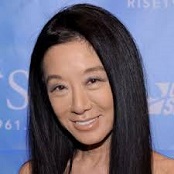

In 1970 New York City-born Vera Ellen Wang (1949-) leaves Vogue mag. to work for Ralph Lauren, becoming known for her wedding gowns, which make fans of Ivanka Trump, Sharon Stone, Jennifer Lopez, Jennifer Garner, Sarah Michelle Gellar, Uma Thurman, Kate Hudson, Holly Hunter, Chelsea Clinton, Kim and Khloe Kardashian et al.; she goes on to design the costume wore by figure skater Nancy Kerrigan in the 1994 Olympics.


In 1971 Cheshire-born Vivienne Westwood (Vivienne Isabel Swire) (1941-), lover of Sex Pistols founder (Sept. 1975) Malcolm Robert Andrew McLaren (1946-2010) opens the SEX fashion shop in King's Road, London, which becomes known for its outrageous punk designs (a favorite of the Sex Pistols), featuring BDSM, safety pins, razor blades, chains, spiked dog collars, etc.
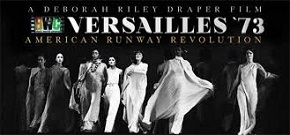
On Nov. 28, 1973 the Battle of Versailles Fashion Show pits French fashion designers Yves Saint Laurent, Pierre Cardin, Christian Dior, Hubert de Givenchy, and Emanuel Ungaro against Am. fashion designers Bill Blass, Donna Karan, Anne Klain, Stephen Burrows, Halston, and Oscar de la Renta, who feature an unprecedented number (11) of black models, stealing the show.
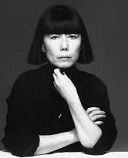
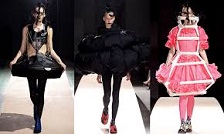
In 1973 Tokyo-born Japanese fashion designer Rei Kawakubo (1942-) launches her own fashion house Comme des Garcons Ltd., designing anti-fashion clothing featuring deconstructed assymetrical designs with holes and frayed unfinished edges, which critics call "Hiroshima chic", limiting herself to black, white, and dark grey until the late 1980s.

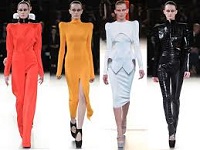
In 1973 Strasbourg, France-born gay fashion designer Thierry Mugler (1948-) creates his first personal collection, "Cafe de Paris; in 1978 he opens his first Paris boutique in the Place des Victoires, becoming known for solid dominating colors and strong almost cruel style; in 1992 he introduces Angel perfume, with a fragrance combining praline, chocolate, and patchouli, and a bottle in the shape of a faceted star, becoming a favorite of Diana Ross, Barbara Walters, and Hillary Clinton; in 1996 he introduces Angel Men, with a fragrance combining caramel, coffee, vanilla, patchouli, and honey, which becomes a favorite of anal, er, gay men.
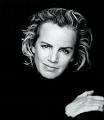

In 1973 German minimalist fashion designer Heidemarie Jiline "Jil" Sander (1943-) begins designing women's wear with high-end materials that catch on with business execs, causing her to become known as the "Master of Minimalism".




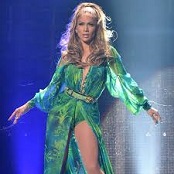
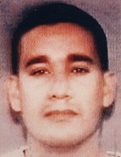
In 1973 Reggio Calabria, Italy-born gay fashion designer Giovanni Maria "Gianni" Versace (1946-97) becomes designer for the Byblos line of Genny's, going on to open a boutique in Milan in 1978, staging his first show next year, featuring supermodels, rock music, and other celebs to be sure it's hip and vulgar; with the help of his sister Donatella Versace and brother Santo Versace he goes on to design costumes for the TV series "Miami Vice" (1989) and several films incl. "Judge Dredd" (1995), "Showgirls" (1995), and "To Wong Foo, Thanks for Everything, Julie Newmar" (1995), with sales reaching $800M by 1996; too bad, he is murdered in front of his Miami Beach Casa Casuarina mansion by gay millionaire boy toy Andrew Phillip Cunanan (b. 1969) on July 15, 1997, leaving longtime gay lover Antonio D'Amico (1959-) a lifetime pension; meanwhile his sister Donatella Francesca Versace (1955-) follows in his footsteps, holding her first show at the Hotel Ritz in Paris on July 18, 1998, making fans of Prince Charles, Sir Elton John, Kate Moss, Liz Hurley, Catherine Zeta-Jones et al. while using celebs incl. Jennifer Lopez, Madonna, Courtney Love, Demi Moore, Christina Aguilera, January Jones, Lady Gaga, and Beyonce as promoters, with Elizabeth Hurley wearing her Black Versace Dress (AKA THAT Dress) to the 1994 debut of "Four Weddings and a Funeral", and Jennifer Lopez wearing her Green Jungle-Dress to the Grammys on Feb. 23, 2000.

In 1975 Piacenza-born Italian bi fashion designer Giorgio Armani (1934-2025) founds his own fashion house in Milan with $1K in capital to produce men's clothing; by 2005 sales are $1.7B with 4.7K employees, 13 factories, and 300 stores in 36 countries; he goes on to become Italy's #1 fashion designer, the first to ban models with a BMI under 18, and design stage costumes for Lady Gaga, achieving a net worth of Euro 11.5B.

In 1975 Amancio Ortega Gaona (1936-) and his wife Rosalia (Rosalía) Mera Goyenechea (1944-2013) found the Zara fashion chain in A Coruna, Galicia, which goes on to grow to 2.2K stores and become the main brand of the Inditex (Industria de Diseno Textil) group (founded June 12, 1985), the world's largest apparel retailer, which operates 7.2K stores in 93 countries.


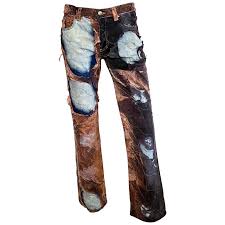
In 1975 after patenting a printing process for leather, Florence, Italy-born fashion designer Roberto Cavalli (1940-2024) founds the Roberto Cavalli fashion house in Florence, which becomes known for its unvarying looks ignoring changing trends, with the slogan "Femininity, spiritedness, and leopard print". In 1994 in Milan Cavalli introduces his first sand-blasted jeans, going on to expand sales to 50+ countries worldwide. In 2004 Cavalli introduces a line of feminine underwear featuring images of Hindu goddesses, causing the Hindu community to protest and apologies to be made.

On Jan. 19, 1976 Belgian-born Am. fashion designer Anne Elisabeth Jane "Liz" Claiborne (1929-2007) founds Liz Claiborne Inc., becoming a hit selling functional fashionable mix-and-match sportswear clothes for working women; in 1986 it becomes the first Fortune 500 co. founded by a woman; she and her hubby Arthur Ortenberg retire in June 1989 with $100M in stock, leaving 3.4K employees.


In 1976 New York City-born fashion designer Mary McFadden (1938-2024) founds Mary McFadden Inc., which becomes famous for its pleated dresses modeled after the caryatids on the Acropolis that drape "like liquid gold" down heir bodies, made of the synthetic charmeuse she calls Marii, becoming a hit with Jackie O et al., causing Harold Koda of the Metropolitan Museum of Art Costume Inst. to deem her a "design archeologist".


In Nov. 1976 gay Portsmouth, Va.-born fashion designer Perry Edwin Ellis (1940-86) presents his first women's sportswear line called Portfolio for the Vera Cos., founding his own fashion house Perry Ellis Internat. in 1978, along with a showroom on 7th Ave. in New York City, branching into men's wear in 1980, reaching sales of $250M in 1986, becoming known for their menswear collection of "non-traditional, modern classics"; too bad, he dies of AIDS on May 30, 1986.

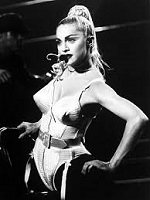
Looking for something? In 1976 gay French fashion designer Jean-Paul Gaultier (1952-) debuts his first collection, becoming known as the enfant terrible of French fashion for his shocking ideas based on street wear, incl. man-skirts and cone-breasted bustiers worn by Madonna and Marilyn Manson; in 2003-10 he becomes the creative dir. of Hermes. In 1985 Gaultier introduces man-skirts on the Paris runways, causing him to become known as the enfante terrible of French fashion, designing Madonna's cone bra for her 1990 Blonde Ambition Tour; Brad Pitt models for Joe Boxer, which introduces underwear worn on the outside, the first bikini brief for men, and a pair of boxers with a raccoon tail.

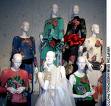
In 1977 Japanese fashion designer Hanae Mori (1926-) opens a haute couture design house in Paris, becoming an icon of the liberated woman and growing to $500M sales by the 1990s.


In 1977 Italian gay fashion designer Gianni Versace (1946-97) opens a fashion house in Milan, staging his first show next year, featuring supermodels, rock music, and other celebs to be sure it's hip and vulgar; with the help of his sister Donatella Versace and brother Santo Versace, sales reach $800M by 1996.

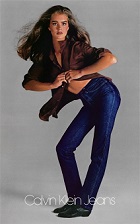

In 1978 Bronx, N.Y.-born Jewish fashion designer Calvin Richard Klein (1942-) introduces his tight-fitting signature jeans, which sell 200K pairs the first week, launching his career of pushing ordinary clothing items for sex appeal, incl. men's underwear in the early 1980s; in 1980 he launches an ad campaign featuring 15-y.-o. Brooke Shields asking "Do you want to know what comes between me and my Calvins? Nothing", which are banned by some stations; the photographer is New York City fashion photographer Richard Avedon (1923-2004); in 1995 his ads are criticized as "kiddie porn". On Nov. 19, 1980 CBS-TV rejects a Calvin Klein Jeans Ad Featuring Brooke Shields, where she utters the soundbyte "You know what comes between me and my Calvins? Nothing."

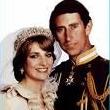

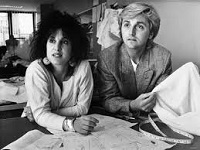

On July 29, 1981 British Prince Charles of Wales (1948-) and Lady Diana Spencer (1961-97) (who have only been together 13x, always calling him "sir") have a royal wedding in St. Paul's Cathedral in front of 2.7K guests, with a worldwide TV audience of 750M, afterwards pubicly bussing on the balcony of Buckingham Palace; new archbishop of Canterbury (1980-91) Robert Alexander Kennedy Runcie (1921-2000) officiates; she wears an $18K ivory silk taffeta gown by Welsh fashion designer David Emanuel (1952-) and London-born British fashion designer Elizabeth Florence Emanuel (nee Weiner) (1953-), with 10K pearls and a 25-ft. detachable train; King Juan Carlos of Spain boycotts the wedding; on July 30 while attending the wedding, Gambian pres. (since 1970) Dawda Jawara is almost overthrown in a bloody leftist coup attempt led by Kukoi Samba Sanyang (1952-), which is quashed on Aug. 5 with the aid of troops from Senegal, after which Sanyanga sambas to exile in Libya.

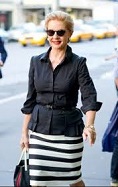
In 1981 Caracas, Venezuela-born fashion designer Carolina Herrera (Maria Carolina Josefina Pacanins y Nino) (1939-) debuts her first haute couture collection, with slightly pushed-up sleeves that Women's Wear Daily calls "Our Lady of the Sleeve".

In 1981 Long Island, N.Y.-born gay Jewish fashion designer Michael Kors (Karl Anderson Jr.) (1959) debuts his women's wear line, expanding into men's wear in 1990, and perfume in 2000; in 1997-2003 he becomes the first women's ready-to-wear designer for the French house Celine.
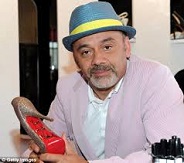
In 1981 Paris-born gay French footwear designer Christian Louboutin (1964-) begins working for Charles Jourdan and Roger Vivier before going freelance, then launches his own house in 1991, making trademark stilettos with red-lacquered soles, making fans of Princess Caroline of Morocco, Diane von Furstenberg, Marion Cotillard, Catherine Deneuve, Christian Aguilera, Joan Collins, Madonna, Nicki Minaj, Gwyneth Paltrow, Sarah Jessica Parker, Britney Spears, Tina Turner et al., bringing stilettos back into fashion in the 1990s.
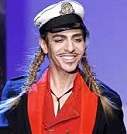
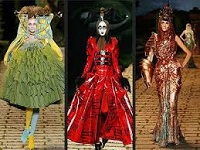
In 1984 Gibraltar-born British fashion designer John Charles Galliano (Juan Carlos Antonio Galliano-Guillen) (1960-) debuts his collection Les Incroyables, based on the French Rev., going on to become British fashion designer of the year in 1987, 1994-5, and 1997, head designer for Givenchy in 1995-6 and Christian Dior in 1996-2011, launching his own label in 1988-2011 before making an anti-Semitic speech in a Paris bar on Feb. 25, 2011 that derails his career; in Oct. 2014 he becomes creative dir. of Maison Margiela.

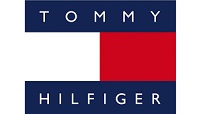
In 1984 after turning down a job from Calvin Klein, Elmira, N.Y.-born fashion designer Thomas Jacob "Tommy" Hilfiger (1951-) founds his own men's sportswear line, starting with a Coca-Cola clothing line, going on to design clothing for music subculture stars incl. Pete Townshend, Sheryl Crow, Britney Spears, Lenny Kravitz, and Aaliyah.
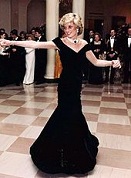
On Nov. 11, 1985 Princess Diana and Prince Charles attend a gala dinner at the White House, where she wears the midnight blue velvet Travolta Dress, designed by London-born "Master of the English Thoroughbred Look" Victor Edelstein (1946-), and is photographed dancing with John Travolta to the music from his 1977 film "Saturday Night Fever"; in June 1997 it is auctioned for £100K, and again on Mar. 19, 2013 by Kerry Taylor in London for £240K.
In 1985 Calvin Klein introduces the Obsession fragrance line with sexy photos by Bruce Weber. In 1985 Paula Dorf piles black eyeliner on entertainers Boy George, Bonnie Raitt (1949-), Stevie Nicks (1948-), Kiss and the Bangles using art supply paintbrushes. In 1985 big, messy, teased "bedroom" hair is in, along with "freeze-hold" hairsprays and one-color hair treatments.

In 1986 New York City-born gay Jewish fashion designer Marc Jacobs (1963-) debuts his first collection, joining Perry Ellis in 1988, getting fired in 1992 for designing a "grunge" collection; in 1994 he launches his own line of men's wear, going on to expand to 200 retail stores in 80 countries; in 1997-2014 he becomes the creative dir. of the French house Louis Vuitton.
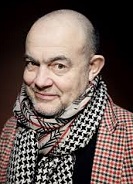
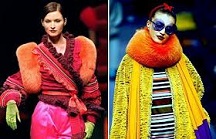
In 1987 Arles-born French fashion designer Christian Marie Marc Lacroix (1951-) opens his own fashion house, selling ready-to-wear clothing based on historical costumes, incl. the short puffball skirt ("le pouf") and low decollete necklines, using hot Mediterranean colors with an eclectic selection of patterns and fabrics, which don't fill the needs of working women, never turning a profit.

In 1987 after launching his IS New York label at age 15, Brooklyn, N.Y.-born gay Jewish fashion designer Isaac Mizrahi (1961-) debuts his first collection, becoming a hit with his decadent refined elegant New York City look, causing Chanel to bankroll him in 1992-8, making fans of Selma Blair, Nicole Kidman, Debra Messing, Sarah Jessica Parker, Natalie Portman, Julia Roberts et al.; in 2002 he designs a collection for Target, causing sales to zoom to $300M a year before leaving for Liz Clairborne in 2008-9. On Jan. 16, 2006 (eve.) the 2006 (63rd) Golden Globe Awards gives the best drama film award to "Brokeback Mountain", and best musical or comedy to "Walk the Line"; Philip Seymour Hoffman wins the best drama actor award for "Capote", and Felicity Huffman the best drama actress award for "Transamerica"; gay fashion designer Isaac Mizrahi (1961-) gropes actress Scarlett Johansson's breast, asks Eva Longoria about her pubic hair, and peeks down Teri Hatcher's dress, supposedly to determine how it was constructed.
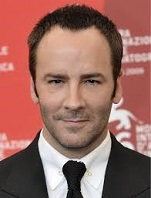
In 1988 Austin, Tex.-born gay fashion designer Thomas Carlyle "Tom" Ford (1961-) begins working for Perry Ellis, moving to Milan to work for Gucci in 1990, helping rescue it from bankruptcy and build its image, becoming creative dir. in 1994, introducing Halston-style velvet hipsters, skinny satin shirts, and metallic car-finish patent books, increasing its stock valuation to $4B by 1999, when it acquires the fashion house of Yves Saint Laurent, where Ford pushes the Opium and M7 perfumes with provocative nude ads; in Apr. 2004 after Gucci reaches $10B valuation, he leaves and launches his own label, making fans of Michelle Obama, Beyonce, Daniel Craig, Johnny Depp, Tom Hanks, Hugh Jackman, Jennifer Lopez, Gwyneth Paltrow, Will Smith, Justin Timberlake et al.; in 2005 he founds the film production co. Fade to Black, making his dir. debut in 2009 with "A Single Man".
In the 1990s the supermodel era is launched by the "Big Six", incl. Linda Evangelista (1965-), Cynthia Ann "Cindy" Crawford (1966-), Christy Turlington (1969-), Naomi Campbell (1970-), Claudia Schiffer (1970-), and Katherine Ann "Kate" Moss (1974-); Campbell, Evangelista and Turlington are called "the Trinity"; on Nov. 21, 1990 Rolling Stones singer Mick Jagger unofficially marries 6' Tex.-born supermodel Jerry Faye Hall (1956-) in Bali; annulled in 1999 after having kids Elizabeth in 1984, James in 1985, Georgia May in 1992, and Gabriel in 1997.

In 1991 after years working out of her apt., Detroit, Mich.-born fashion designer Anna Sui (1964-) holds her first show, becoming a hit and growing a fashion empire.
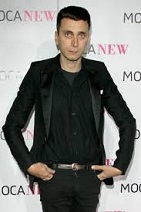
In 1992 Paris-born gay French fashion designer Hedy Lamarr, er, Hedi Slimane (1968-) becomes the asst. of Jean-Jacques Picart on the Centenary Monogram Canvas Project of Louis Vitton, which incl. fashion designers Azzedine Alaia, Helmut Lang, Sybilla, Manolo Blahnik, Romeo Gigli, Isaac Mizrahi, and Vivienne Westwood; in 1996 Pierre Berge hires him as the dir. of the ready-to-wear men's clothing line at Yvves Saint Laurent, rising to artistic dir., going on to debut his "skinny" look before leaving in 2001 for Christian Dior, designing the Higher fragrance, making fans of David Bowie, Brad Pitt, Madonna, Nicole Kidman, Mick Jagger, Beck, Jack White, and the rock groups The Libertines, Daft Punk, The Kills, and Franz Ferdinand; in Mar. 2011 he succeeds John Galliano as creative dir. at Dior; in Mar. 2012 he replaces Stefano Pilati as creative dir. at Yves Saint Laurent, working out of his own studio in Los Angeles, Calif.; in Apr. 2016 he is succeeded by Anthony Vaccarello.
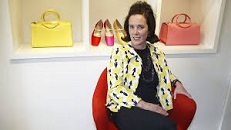
In 1993 Kansas City, Mo.-born fashion designer Kate Spade (Valentine) (Katherine Noel Brosnahan) (1962-2018) founds the Kate Spade New York designer brand to produce stylish handbags, becoming a hit; in 1999 Neiman Marcus acquires a 56% share, reaching 100% in 2006.

In 1995 after working for Donna Karan, Anne Klein, and Calvin Klein, gay Newark, N.J.-born fashion designer Narciso Rodriguez III (1961-) becomes design dir. of TSE in New York City and Cerruti in Paris, designing ready-to-wear men's and women's clothing; in 1996 he designs the minimal bias-cut white silk wedding dress for Carolyn Bessette for her wedding to John F. Kennedy Jr., gaining him internat. fame; on Nov. 4, 2008 he gains more fame when Michelle Obama wears one of his dresses to celebrate her hubby Barack Obama's victory in the U.S. pres. election.

In 1996 English gay fashion designer Lee Alexander McQueen (1969-2010) becomes head designer at Givenchy (until 2001), becoming known as "the hooligan of English fashion", staging a runway show in 1998 featuring double amputee model Aimee Mullins striding down the catwalk on wooden legs, followed by a recreated shipwreck in 2003, a human chess game in 2005, and a life-sized hologram of supermodel Kate Moss in 2006.

In Mar. 1997 after apprenticing at age 16 with Christian Lacroix, then graduating from Ravensbourne College of Design and seeing her 1995 debut show featuring models Naomi Campbell and Kate Moss become a hit, London-born animal-product-hating Stella Nina McCartney (1971-), daughter of Beatle Paul McCartney succeeds Karl Lagerfeld as creative dir. of Chloe fashion house, going on to launch her own fashion house in 2001 with Gucci; in 2003 she launches her perfume Stella; in 2004 she designs clothes for Madonna's Re-Invention Tour, along with a sports line for Adidas.
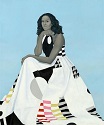
In 2000 after working for Hermes, Louis Vuitton, and Christian Dior, the fashion brand Milly is founded by Michelle Smith and her husband Andrew Oshrin, making fans of Beyonce, Gyneth Paltrow, Kate Middleton, and Michelle Obama, who selects her to design the dress she wears in her Official Portrait of First Lady Michelle Obama, unveiled at the Smithsonian Inst. on Feb. 12, 2018, painted by Amy Sherald.


On Sept. 20-21, 2005 the multimillion-dollar career of supermodel Kate Moss (1974-) tanks when photos of her dosing on cocaine with bad boy rocker beau Pete Doherty (1979-) appear in the British tabloid Sunday Mirror, immediately losing a $1.25M a year contract with Chanel as the face of their Coco Mademoiselle fragrance, plus a $2M a year contract with Swedish clothing giant Hennes & Mauritz, eventually reaching $8M of lost work; on Sept. 22 Moss issues a public apology, taking "full responsibility for my actions"; the fact that her entire industry pushed her underfed "heroin chic" image in its ads for products such as Opium promotes conservation of public fiction in the Fiction Cent.?; by the end of the year her career is back, and she is on three major mag. covers?

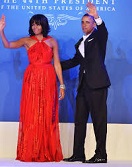
In 2006 after designing Jason Wu dolls for Integrity Toys since age 16, Taipei, Taiwan-born gay Canadian fashion designer Jason Wu (1982-) debuts his first fall collection, making fans of Ivanka Trump, January Jones, RuPaul, Amber Valletta, and Michelle Obama, who wears one of his coats during her Apr. 2009 visit with Queen Eliabeth II, and a ruby red velvet-chiffon dress at the 2013 U.S. pres. inaugural ball.
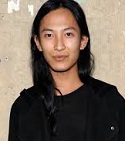
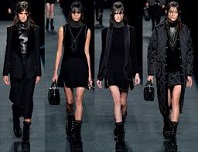
In fall 2007 San Francisco, Calif.-born fashion designer Alexander Wang (1983-) launches his first ready-to-wear women's clothing collection, which is a hit, selling in 700 stores worldwide; he goes on to become known for his urban designs, mostly in black.

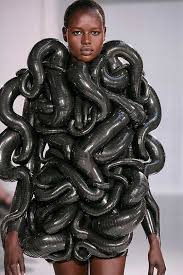
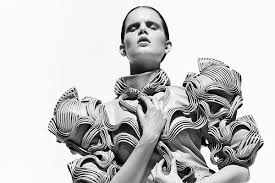
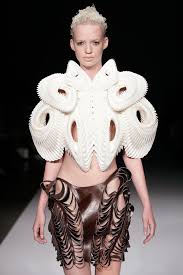
In 2007 after interning for Alexander McQueen, Dutch fashion designer Iris van Herpen (1984-) starts her own label, creating dresses loaded with bizarre objects, incl. herp, er, snakes.

In 2008 Harlow, Essex, England-born fashion designer Victoria Caroline Beckham (nee Adams) (1974-) (formerly Posh Spice of the Spice Girls) (wife of soccer star David Beckham) launches her own fashion label, becoming a success despite being a WAG (wife/girlfriend of a high-profile prof. athlete).
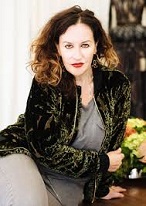
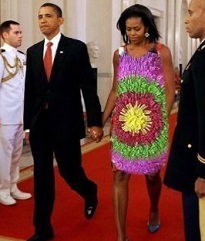
On Nov. 17, 2016 French fashion designer Sophie Theallet (1964-) pub. a Tweet announcing that she will refuse to "dress" new First Lady Melania Trump like she does Michelle Obama, saying that her "brand stands against all discrimination and prejudice" - except hers?